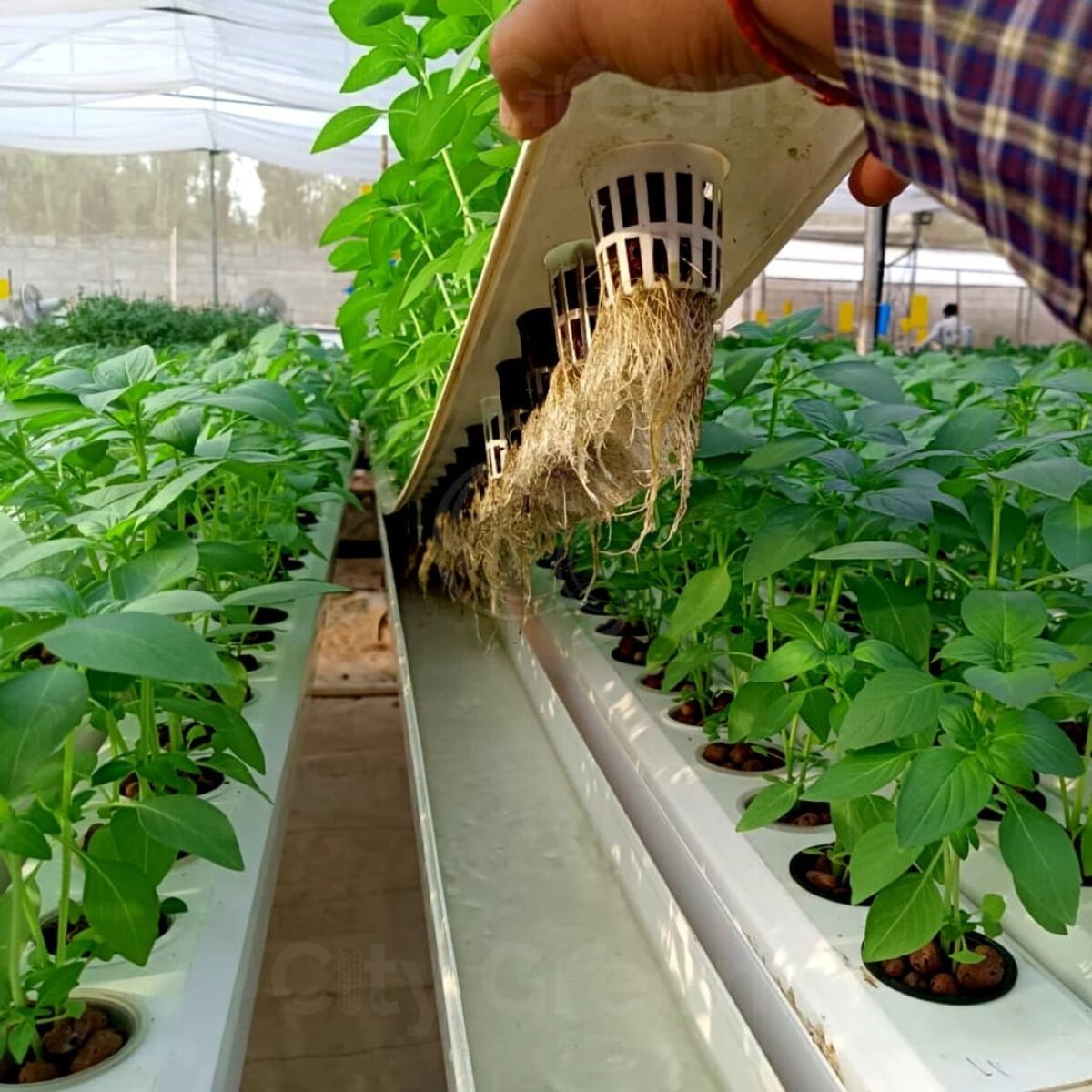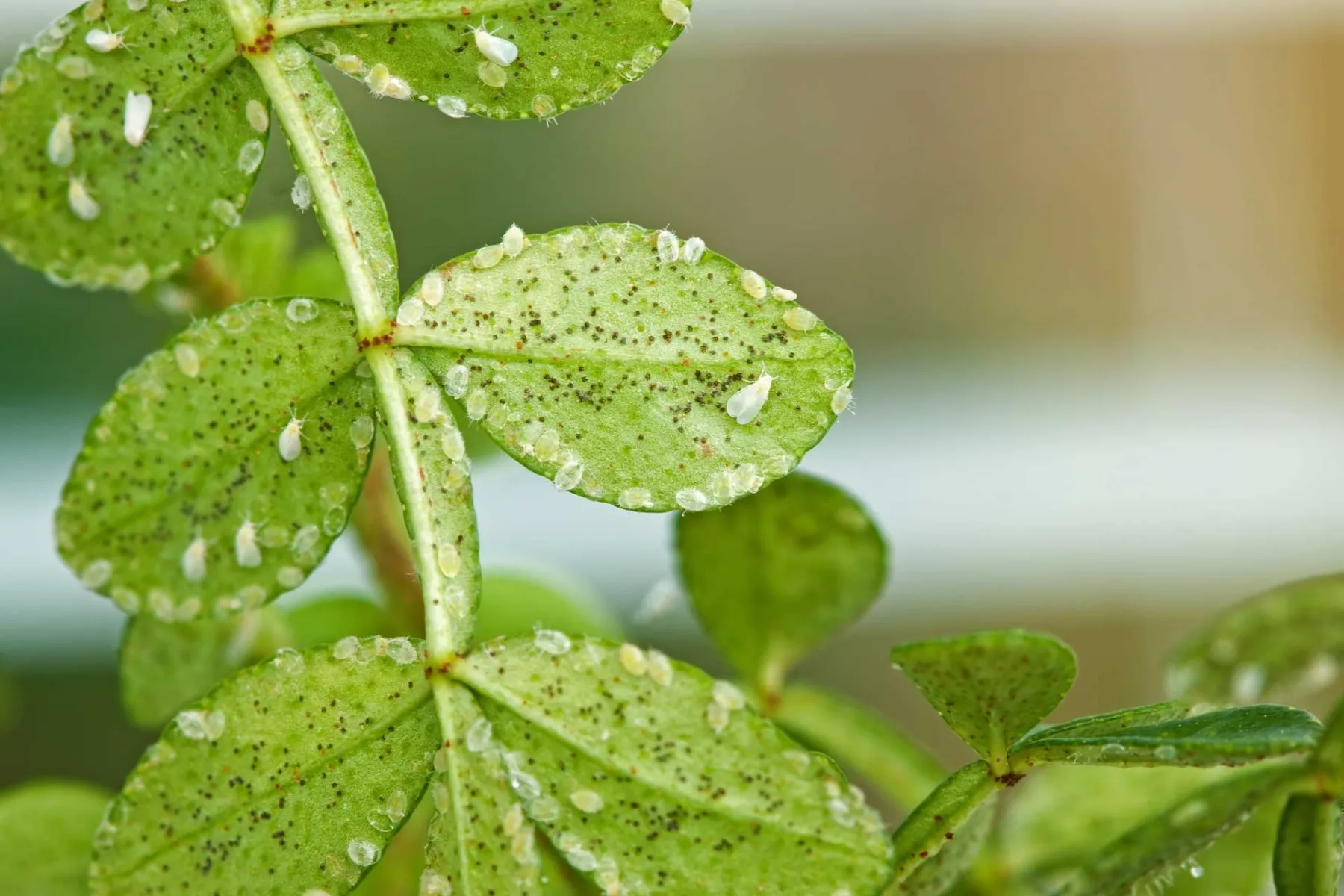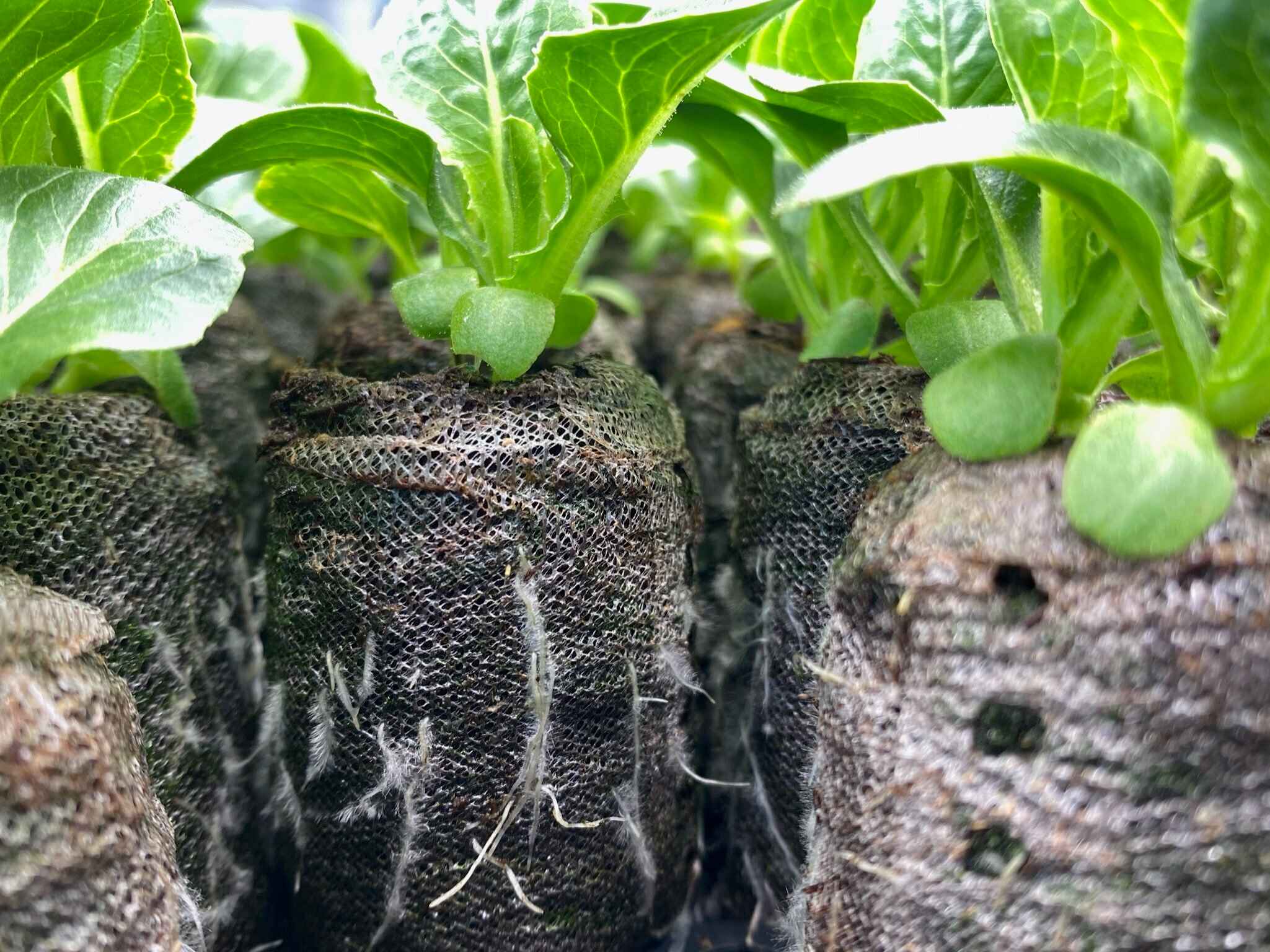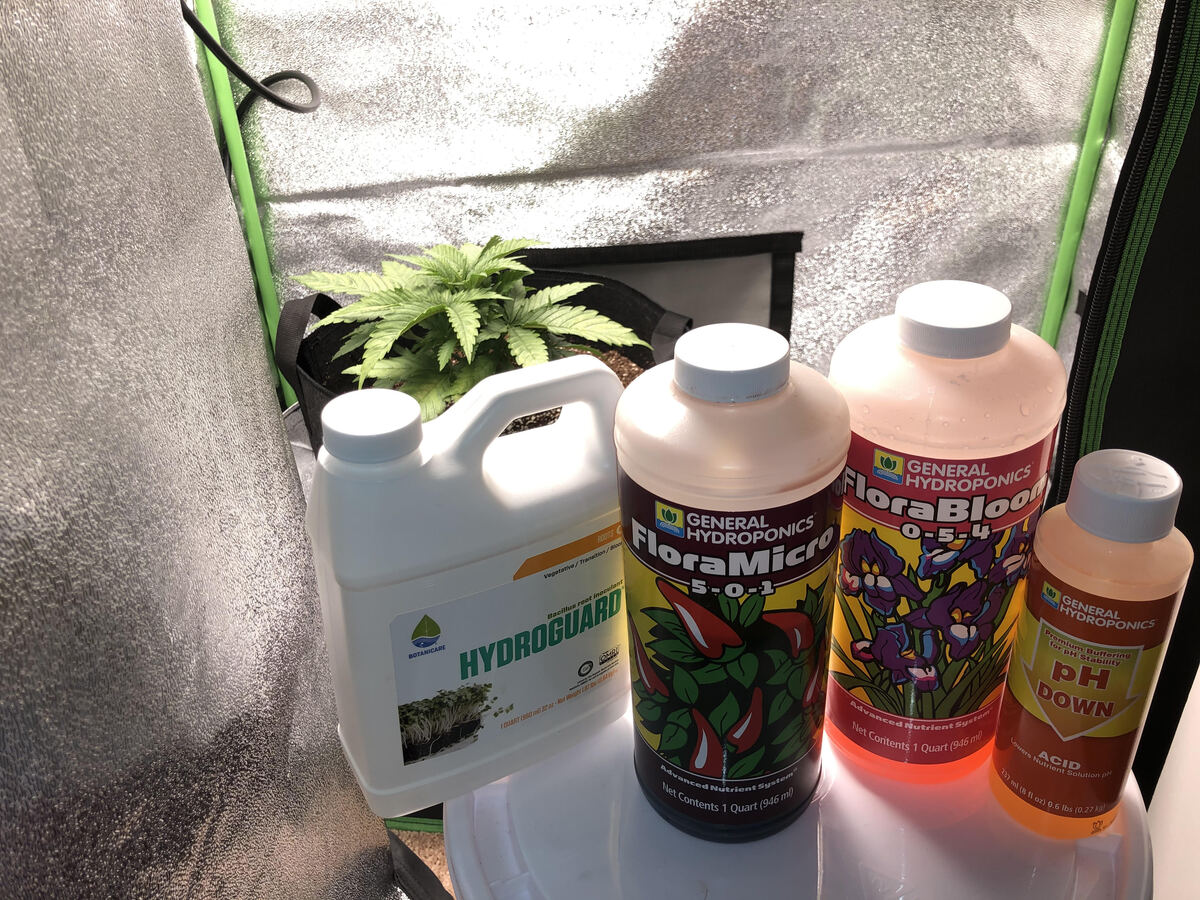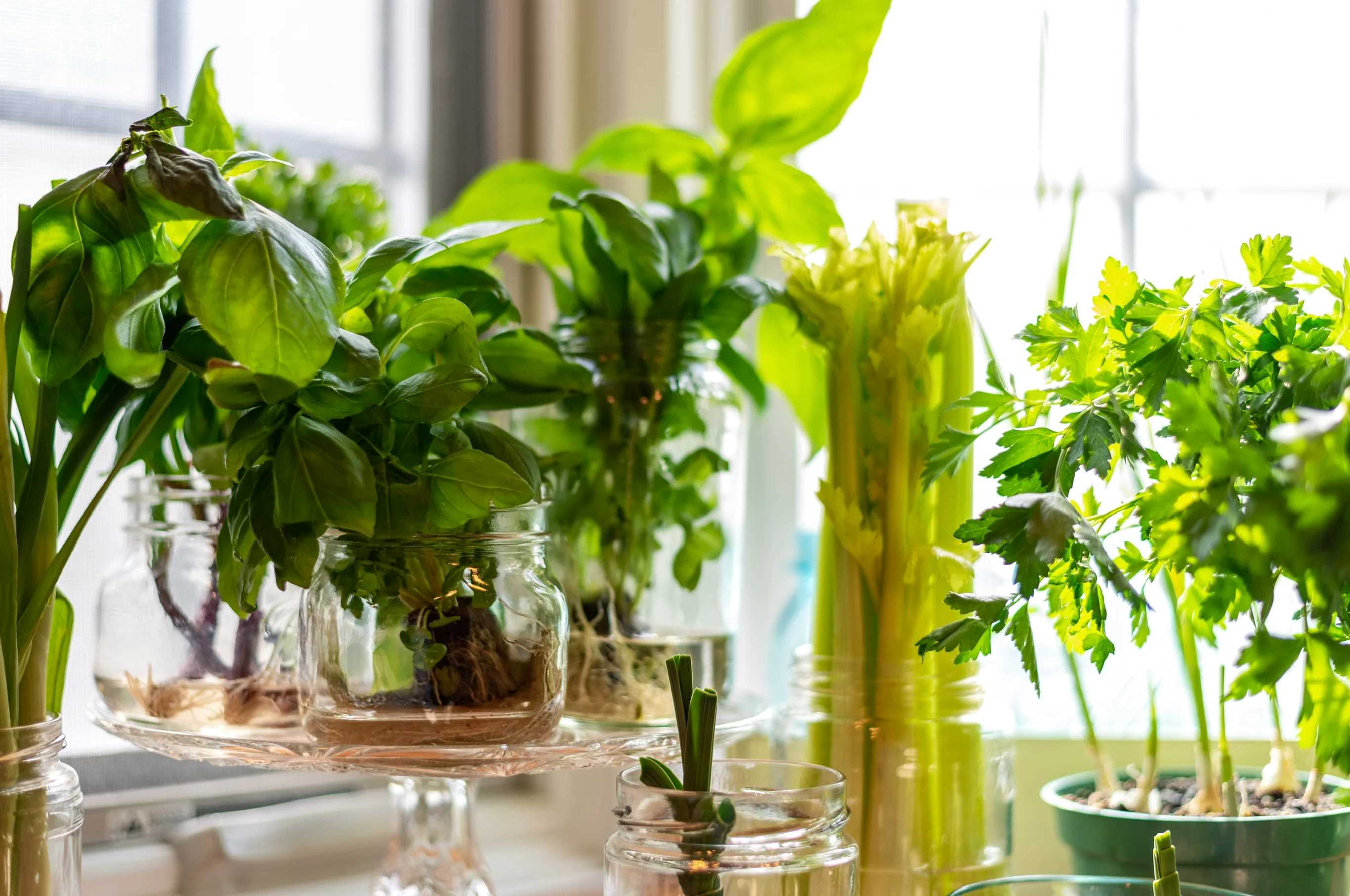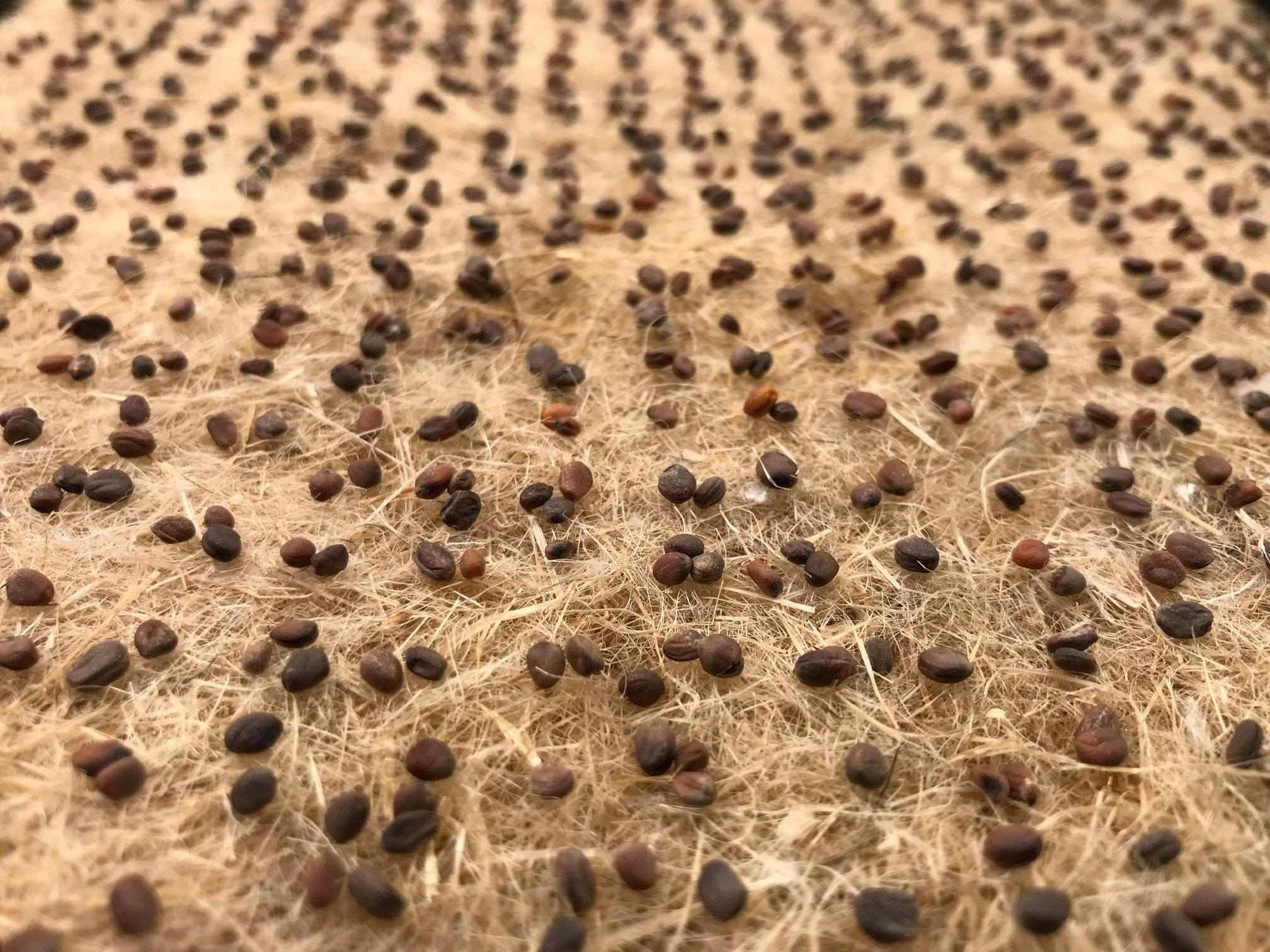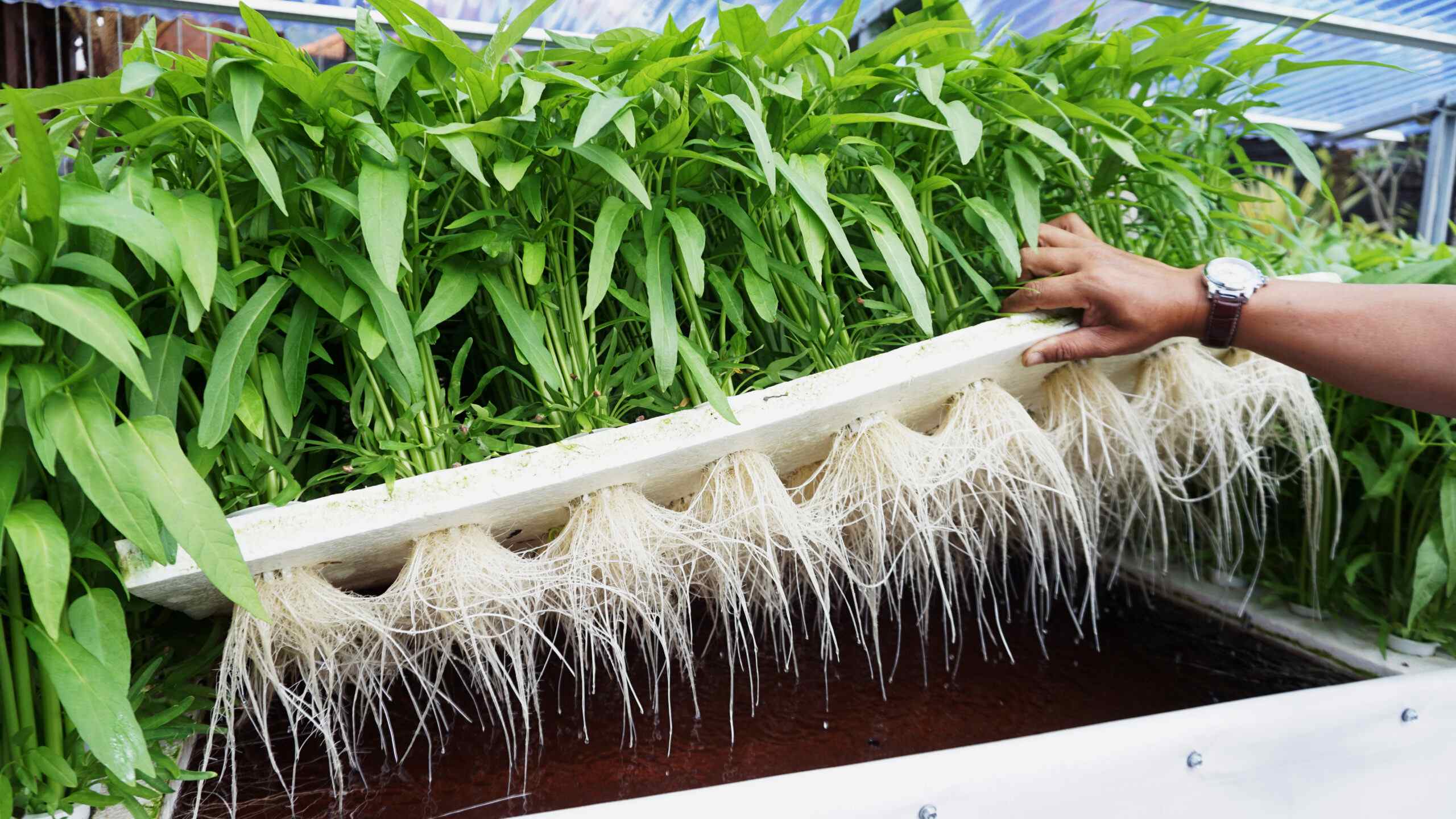Home>Gardening Basics>Getting Started>What Is Rockwool For Hydroponics
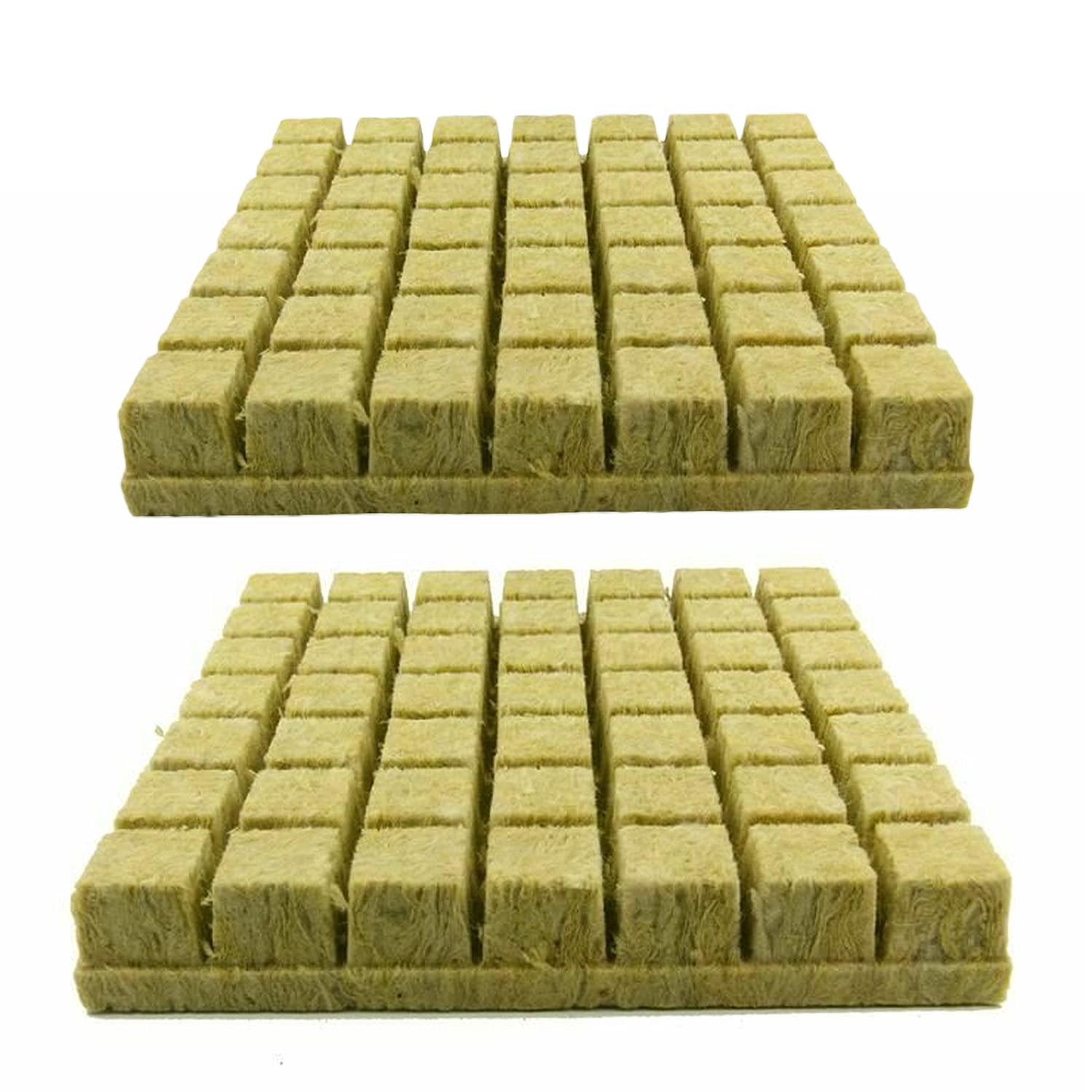

Getting Started
What Is Rockwool For Hydroponics
Modified: January 22, 2024
Learn about how rockwool is used in hydroponics and get started with this versatile growing medium.
(Many of the links in this article redirect to a specific reviewed product. Your purchase of these products through affiliate links helps to generate commission for Chicagolandgardening.com, at no extra cost. Learn more)
Table of Contents
Introduction
Welcome to the exciting world of hydroponics! If you’re new to this innovative gardening technique, you may be wondering what materials are commonly used to grow plants hydroponically. One such material is Rockwool, also known as stone wool or mineral wool. Rockwool is a popular growing medium, particularly for its ability to provide excellent support and moisture retention for plants.
Rockwool is composed of mineral fibers derived from volcanic rock or basalt. These fibers are heated and spun into thin strands, which are then compressed to form Rockwool cubes or slabs. The result is a highly versatile and effective growing medium that can be used in various hydroponic systems.
This article will delve into the world of Rockwool and explore its uses and benefits in hydroponic gardening. We will discuss how Rockwool works in hydroponics, its advantages and drawbacks, as well as how to prepare, plant, and care for plants in Rockwool. So, let’s dive in and uncover the wonders of Rockwool in hydroponics!
What is Rockwool?
Rockwool, also known as stone wool or mineral wool, is a versatile growing medium widely used in hydroponic gardening. It is made from natural materials, including volcanic rock or basalt, which are melted and spun into thin fibers. These fibers are then compressed to form cubes or slabs of Rockwool that serve as an ideal substrate for plant growth.
Rockwool is favored by many hydroponic gardeners for its unique properties. It has excellent water holding capacity while still allowing for adequate drainage. This helps to maintain a consistent moisture level for plant roots, ensuring they receive the necessary hydration and nutrients.
Additionally, Rockwool is inert, meaning it has a neutral pH and is free from pathogens and pests that can harm plants. This makes it a sterile, safe, and reliable medium for growing a wide range of crops hydroponically.
Rockwool is available in various forms, including blocks, cubes, slabs, and granulated fibers. These different forms allow for flexibility in different hydroponic systems, making Rockwool suitable for both individual plantings and large-scale commercial operations.
Overall, Rockwool provides an excellent foundation for plant roots to grow and thrive in hydroponic setups. Its unique composition and structure make it an ideal choice for hydroponic gardeners looking to maximize plant growth and optimize their yields.
How Does Rockwool Work in Hydroponics?
Rockwool has several key characteristics that make it work seamlessly in hydroponic systems. Firstly, its fibrous structure allows it to retain moisture while also providing excellent drainage. This means that the roots of the plants receive a steady supply of water and nutrients, without the risk of waterlogged conditions.
Another benefit of Rockwool is its ability to hold and release oxygen to the roots. The fibrous nature of Rockwool allows for air pockets, ensuring that the roots have access to the necessary oxygen for optimal growth. This oxygenation of the root zone promotes healthy root development and nutrient uptake.
In addition to its moisture retention and oxygenation properties, Rockwool is also an extremely stable and durable growing medium. It holds its shape well and does not break down easily, allowing for multiple uses and easy transplanting of plants.
Rockwool is also versatile in terms of its compatibility with nutrient solutions. It can work well with both liquid and drip systems, accommodating various feeding schedules and nutrient concentrations. The fibrous structure of Rockwool acts as a sponge, absorbing the nutrient solution and slowly releasing it to the plant roots.
Furthermore, Rockwool’s neutral pH level provides a suitable environment for plants to thrive. However, it is important to note that Rockwool is initially alkaline, so it needs to be pre-soaked and treated with a pH-adjusted solution before planting. This ensures that the medium’s pH is balanced for optimal nutrient uptake by the plants.
Overall, Rockwool offers an excellent balance of moisture retention, oxygenation, and stability for plants growing hydroponically. Its fibrous structure and stability make it an ideal choice for a wide range of plants, from small herbs to larger fruits and vegetables.
Benefits of Using Rockwool in Hydroponics
Rockwool provides numerous benefits when used as a growing medium in hydroponics. Its unique properties make it a popular choice among hydroponic gardeners. Below are some of the key benefits of using Rockwool in hydroponics:
- Excellent Water Retention: Rockwool has the ability to retain moisture while still allowing for proper drainage. This ensures that plants have a consistent water supply without the risk of overwatering or waterlogging the root system.
- Optimal Air Porosity: The fibrous structure of Rockwool creates air pockets, allowing for proper oxygenation of the root zone. This promotes healthy root development, nutrient absorption, and overall plant growth.
- Versatility: Rockwool comes in various forms such as cubes, blocks, slabs, and granulated fibers, making it suitable for different hydroponic systems and plant sizes. It can be easily customized and adapted to meet the specific needs of different crops.
- Reusability: Rockwool can be reused for multiple crop cycles, making it a cost-effective option for hydroponic gardeners. After harvesting a crop, the Rockwool can be cleaned and sterilized before being used again, reducing waste and saving money.
- Sterility: Rockwool is an inert and sterile medium, meaning it is free from pests, diseases, and weed seeds. This helps to create a clean and controlled environment for plant growth, reducing the risk of plant infections and ensuring healthier plants.
- Efficient Nutrient Delivery: Rockwool has the ability to absorb and hold nutrient solutions, gradually releasing them to the plant roots as needed. This efficient nutrient delivery system helps to optimize plant growth and maximize yields.
- Uniformity: Rockwool provides consistent growing conditions throughout the medium, ensuring that all plants receive equal access to water, nutrients, and oxygen. This promotes uniform growth and reduces the risk of nutrient deficiencies or imbalances.
- Easy Planting and Transplanting: The stability and solid structure of Rockwool make it easy to plant and transplant seedlings or mature plants. The roots can anchor firmly into the Rockwool, providing a secure base for the plants to grow.
With all these benefits, it’s no wonder that Rockwool is a popular choice for hydroponic gardeners seeking optimal growth and yields for their crops. Its water retention, air porosity, versatility, reusability, sterility, efficient nutrient delivery, uniformity, and ease of use all contribute to its effectiveness as a hydroponic growing medium.
Drawbacks of Using Rockwool in Hydroponics
While Rockwool offers numerous benefits as a growing medium in hydroponics, there are also some drawbacks to consider. Being aware of these limitations can help hydroponic gardeners make informed decisions about whether Rockwool is suitable for their specific needs. Here are some of the key drawbacks of using Rockwool in hydroponics:
- pH Management: Rockwool has an initial high pH level, making it necessary to adjust the pH before use. This extra step in preparation can add time and effort to the setup process.
- Water Retention: While good water retention is generally a benefit, in some cases, Rockwool may hold too much water, leading to overwatering and increased risk of root rot. It is important to carefully monitor watering and drainage to avoid these issues.
- Non-Biodegradable: Rockwool is not biodegradable, which means that it can contribute to environmental waste if not properly disposed of. However, it can be recycled or repurposed for other uses, minimizing its impact on the environment.
- Physical Properties: The fibrous texture of Rockwool can be irritating to the skin and respiratory system. It is recommended to wear protective gloves and a mask when handling or working with Rockwool to avoid any potential discomfort or health risks.
- Cost: Compared to some other growing mediums, Rockwool can be relatively more expensive. However, its reusability and durability can help offset the initial investment over time.
- Root Development: Some plants may not develop roots as well in Rockwool compared to other growing mediums. Certain species may require a more airy or nutrient-rich medium to promote optimal root growth and development.
- Waste Disposal: When Rockwool is no longer usable, proper disposal can be a concern. It is best to check with local waste management guidelines for the correct disposal methods and to minimize any potential negative impact on the environment.
Despite these drawbacks, Rockwool remains a popular choice for hydroponic gardening due to its many advantages. By understanding the limitations and finding ways to mitigate them, hydroponic gardeners can still enjoy the benefits of using Rockwool while minimizing any potential downsides.
Preparing Rockwool for Hydroponic Use
Preparing Rockwool before using it as a growing medium in hydroponics is an essential step to ensure optimal plant growth and success. Proper preparation involves several key considerations. Here’s a step-by-step guide on how to prepare Rockwool for hydroponic use:
- Soaking: Before using Rockwool, it is crucial to soak it in water with a slightly acidic pH (around 5.5 to 6.0) for a minimum of 24 hours. This process helps to remove excess alkalinity and ensure the Rockwool has a balanced pH level before planting.
- pH Adjustment: After soaking, it is recommended to test the pH of the Rockwool. Ideally, the pH should be around 5.5 to 6.0 for most plants. If the pH is too high or too low, adjust it accordingly using a pH-adjusting solution.
- Drainage: Once the Rockwool has been properly soaked and the pH is adjusted, allow the excess water to drain out. It is important not to let the Rockwool become waterlogged, as this can lead to root suffocation and potential plant health issues.
- Seed or Plant Placement: Create small holes or depressions in the Rockwool to accommodate the seeds or the transplants. Gently place the seeds or the root ball of the transplant into the appropriate locations within the Rockwool.
- Moistening: After planting, lightly water the Rockwool to ensure the seeds or transplants make good contact with the medium. Avoid overwatering, but ensure that the Rockwool remains consistently moist during the germination or establishment phase.
By following these preparation steps, you can create an optimal environment for your plants in Rockwool. Taking the time to properly prepare the Rockwool ensures that any initial issues, such as high pH or inadequate moisture, are addressed before planting. This sets the stage for healthy root development and strong growth in your hydroponic system.
Planting and Transplanting in Rockwool
Rockwool provides a versatile and stable medium for planting and transplanting in hydroponic systems. Whether you are starting plants from seeds or moving established plants from another growing medium, Rockwool offers a reliable substrate for root growth. Here are some guidelines for planting and transplanting in Rockwool:
- Seeds: When planting seeds in Rockwool, use a pencil or small stick to create a hole or indentation in the Rockwool cube or slab. Place a few seeds in the hole, cover lightly with a small piece of Rockwool, and gently press it down to secure the seeds in place. Keep the Rockwool moist until germination occurs.
- Transplants: If you are transplanting from another growing medium, gently remove the plant from its original container, taking care not to damage the roots. Create a hole or indentation in the Rockwool and carefully place the plant’s root ball into it. Ensure that the roots are well covered and supported by the Rockwool.
- Firmly Anchor: Whether planting seeds or transplanting, it is important to ensure that the Rockwool firmly holds the plant in place. This promotes stability and enables proper root development and nutrient uptake.
- Watering: After planting or transplanting, water your Rockwool to ensure proper hydration and to establish contact between the plant roots and the growing medium. Avoid overwatering, as excessive moisture can inhibit root growth.
- Monitoring: Regularly check the moisture levels within the Rockwool. It should remain consistently moist but not waterlogged. Adjust watering frequency and volume as needed to maintain optimal moisture levels for your plants.
- Transplanting: If you need to transplant Rockwool-grown plants to larger containers or systems, gently remove the plants from their current Rockwool cubes or slabs, taking care not to disturb the roots too much. Place the roots into the new Rockwool cube or slab or into another suitable growing medium, ensuring that the plants are well supported.
- Root Insulation: To protect the roots from excessive light exposure, it may be necessary to cover Rockwool cubes or slabs with a light-proof material or place them in a light-blocking container. This helps to prevent algae growth and keeps the roots protected and functioning optimally.
By following these guidelines, you can successfully plant and transplant in Rockwool, providing a stable and supportive environment for your plants’ root development. Rockwool’s structure and water-holding capacity help promote healthy growth and ensure that your plants receive the necessary nutrients for thriving in a hydroponic system.
Caring for Plants in Rockwool
Caring for plants in Rockwool involves providing them with the necessary care and attention to ensure healthy growth and optimal yields. Here are some essential practices for caring for plants in Rockwool:
- Watering: Monitor the moisture levels within the Rockwool and water as needed. Rockwool retains moisture well, so it is important not to overwater, as this can lead to root rot. Maintain a balance between keeping the Rockwool consistently moist and avoiding waterlogging.
- Nutrient Solution: Ensure that your plants receive the proper nutrient solution. Hydroponic systems often require regular feeding of a well-balanced nutrient solution. Monitor the pH and nutrient levels in the solution and adjust as needed to provide the necessary nutrients for your plants.
- Lighting: Provide the appropriate lighting conditions for your plants according to their specific requirements. Most plants grown in Rockwool thrive in well-lit areas with full spectrum artificial lighting or natural sunlight. Adjust the lighting intensity and duration based on the needs of your plants.
- Pruning and Training: Regularly inspect and prune your plants to remove any dead or damaged foliage. Additionally, consider training techniques, such as pruning or trellising, to shape and support your plants’ growth. This can help optimize light exposure, airflow, and overall plant health.
- Pest and Disease Management: Although Rockwool is generally free from pests and diseases, it is essential to monitor your plants for any signs of infestation or disease. Implement preventive measures, such as maintaining cleanliness, appropriate ventilation, and the use of beneficial insects or organic pest control methods, to prevent and manage any potential issues.
- pH Monitoring: Regularly check the pH levels of your Rockwool and nutrient solution. Rockwool can affect the pH balance over time, so it is crucial to monitor and adjust as needed to ensure optimal nutrient uptake by the plants.
- Environment Control: Maintain suitable environmental conditions for your plants, including temperature, humidity, and airflow. Different plants have varying requirements, so ensure that you create an environment that best suits the needs of your specific crops.
- Observation: Regularly observe and assess the overall health and growth of your plants. Look for any signs of stress or nutrient deficiencies and address them promptly. By staying vigilant, you can detect any issues early and take appropriate action to safeguard your plants’ health.
By following these care practices, you can optimize the growth and productivity of your plants in Rockwool. Providing the right watering, nutrient solution, lighting, pruning, pest management, pH monitoring, environmental control, and observation will contribute to healthy, vibrant plants in your hydroponic system.
Reusing and Disposing of Rockwool
Rockwool is a durable and reusable growing medium, making it an environmentally friendly choice for hydroponic gardeners. Properly reusing and disposing of Rockwool is not only cost-effective but also helps reduce waste. Here are some guidelines for reusing and disposing of Rockwool:
- Reusing: After harvesting your plants, carefully remove any remaining roots or plant debris from the Rockwool. Thoroughly rinse the Rockwool with water to remove any dirt or excess nutrients. You can then sterilize it by soaking it in a solution of hydrogen peroxide or a mild bleach solution, followed by rinsing with clean water.
- Drying: Once the Rockwool is clean, allow it to air dry completely to prevent the growth of mold or bacteria. This step is crucial to ensure that the Rockwool is ready for subsequent use.
- Storage: Store the dried Rockwool in a clean and dry area until you are ready to use it again. Keep it away from excessive moisture or exposure to pests.
- Replanting: When reusing Rockwool, it is recommended to pre-soak it in a pH-adjusted nutrient solution before planting new crops. This helps ensure a proper nutrient balance and pH level for the plants’ optimal growth.
- Disposal: If you decide to dispose of your Rockwool, it is important to handle it responsibly. Check with your local waste management guidelines for instructions on how to dispose of Rockwool properly. In many cases, Rockwool can be included with regular waste as long as it is free from hazardous substances or chemicals. However, recycling or repurposing the Rockwool is often a better option to minimize environmental impact.
- Recycling: Some regions offer recycling programs specifically for Rockwool. Check with local recycling centers or facilities to see if they accept Rockwool for recycling. If available, recycling the Rockwool helps reduce waste and supports sustainable practices in hydroponic gardening.
- Repurposing: Another option is to repurpose the Rockwool for other uses. For example, it can be used as a drainage layer in potted plants, as a filler material in construction, or as insulation in various applications. Creatively exploring alternative uses for Rockwool can extend its lifespan and reduce waste.
By reusing or properly disposing of your Rockwool, you can minimize waste and contribute to a more sustainable approach in hydroponic gardening. Whether you choose to reuse, recycle, or repurpose the Rockwool, these practices help reduce the environmental impact of using this versatile growing medium.
Conclusion
Rockwool proves to be a valuable and versatile growing medium for hydroponic gardening. Its fibrous structure, excellent water retention, and oxygenation properties create an ideal environment for plant roots to thrive. With its neutrality and sterility, Rockwool provides a clean and controlled foundation for healthy plant growth, free from pests and pathogens.
When using Rockwool in hydroponics, proper preparation and care are crucial. Soaking the Rockwool, adjusting the pH, and ensuring adequate drainage are essential steps to set the stage for successful plant growth. Planting or transplanting in Rockwool requires attention to detail, ensuring that the roots are properly anchored and the plants receive sufficient moisture.
The benefits of using Rockwool in hydroponic systems include excellent water retention, optimal air porosity, versatility in various system setups, reusability, sterility, efficient nutrient delivery, uniformity, and ease of use. However, it is important to be aware of the drawbacks as well, such as the need for pH management, non-biodegradability, and potential root development challenges for certain plants.
Caring for plants in Rockwool involves consistent monitoring of moisture levels, nutrient solutions, lighting, pruning, pest management, pH levels, environmental conditions, and overall plant health. By providing the necessary care and attention, hydroponic gardeners can ensure healthy growth and maximize yields.
At the end of a plant’s life cycle, Rockwool can be reused by cleaning, sterilizing, and drying it for subsequent use. Alternatively, proper disposal methods should be followed, including checking local waste management guidelines for appropriate disposal or exploring recycling and repurposing options to minimize environmental impact.
In conclusion, Rockwool has proven to be a reliable and effective growing medium in hydroponic gardening. It offers numerous benefits, provides a stable environment for root development, and contributes to the overall success of plants in a hydroponic system.
